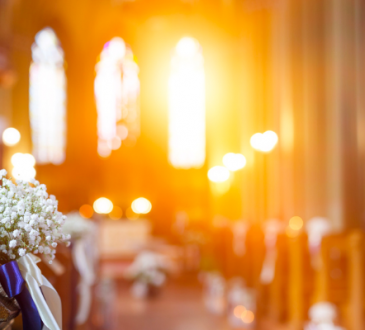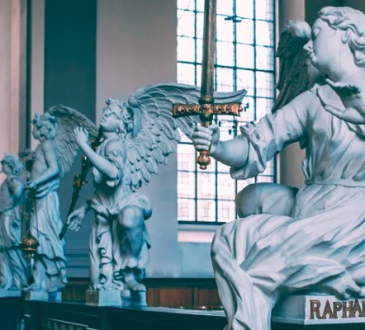The Timeless Beautiful Church Icons: A Glimpse into Sacred Art
Church icons, with their rich history and intricate symbolism, stand as timeless witnesses to the divine and the human spirit. These sacred works of art have adorned churches for centuries, serving as windows to the divine realm and inspiring awe, reverence, and contemplation among believers. In this exploration, we delve into the world of beautiful church icons, unraveling the stories they tell, the symbolism they carry, and the enduring beauty that transcends time.
Contents
- 1 The Origins of Church Icons:
- 2 Theological Significance:
- 3 Symbolism in Church Icons:
- 4 The Iconostasis: Gateway to the Divine:
- 5 Styles and Schools of Iconography:
- 6 The Icon as a Spiritual Aid:
- 7 Contemporary Perspectives on Church Icons:
- 8 Preserving the Tradition:
- 9 The Mystical Language of Colors in Church Icons:
- 10 Iconography as Sacred Storytelling:
- 11 The Role of Church Icons in Liturgy:
- 12 The Influence of Church Icons on Western Art:
- 13 Conclusion:
The Origins of Church Icons:
The tradition of using icons in Christian worship dates back to the early centuries of the Church. Icons, from the Greek word “eikon,” meaning image, were seen as windows to the divine, allowing believers to connect with the sacred tangibly and visually. The use of icons became especially prominent in the Eastern Orthodox Church, where they played a central role in religious practices.
Theological Significance:

Church icons are not mere decorative elements; they hold profound theological significance. Each icon is a visual representation of sacred scripture, tradition, and the teachings of the Church. The process of creating an icon involves careful adherence to established guidelines, ensuring that the portrayal of religious figures and scenes follows the teachings of the faith.
Symbolism in Church Icons:
One of the most captivating aspects of church icons is the symbolism embedded in their details. From the colors used to the gestures of the depicted figures, every element carries a deeper meaning. For example, the use of gold symbolizes the divine light, while red represents the life-giving blood of Christ. The positioning of hands and facial expressions convey spiritual truths and emotional depth, inviting viewers to engage in a contemplative journey.
The Iconostasis: Gateway to the Divine:
In Orthodox Christianity, the iconostasis is a prominent feature in church architecture. This screen of icons, separating the nave from the sanctuary, serves as a symbolic gateway to the divine presence. The arrangement of icons on the iconostasis follows a specific order, with central placement given to the most important figures such as Christ, the Virgin Mary, and significant saints. This arrangement creates a visual narrative of salvation history, inviting worshippers to participate in the unfolding drama of redemption.
Styles and Schools of Iconography:
Over the centuries, different regions and traditions have developed their distinct styles of iconography. From the intricate Byzantine style to the more subdued Russian iconography, each school of iconography reflects the cultural and theological nuances of its respective traditions. Exploring these styles provides a glimpse into the diversity of expressions within the broader umbrella of church iconography.
The Icon as a Spiritual Aid:
Beyond their aesthetic appeal, church icons serve as spiritual aids in the life of believers. Icons are not passive images but active participants in the worship experience. Many Christians use icons as tools for prayer and meditation, contemplating the divine mysteries while gazing upon the holy images. The tactile aspect of venerating icons, such as kissing or touching them, further deepens the connection between the worshipper and the sacred.
Contemporary Perspectives on Church Icons:

In the modern era, church icons continue to captivate artists and worshippers alike. While traditional iconography remains a vibrant and cherished practice, contemporary artists have also explored innovative approaches to icon-making. The enduring appeal of church icons in contemporary society speaks to their ability to transcend cultural and temporal boundaries, offering a timeless bridge between the earthly and the divine.
Preserving the Tradition:
As with any form of art, preserving the tradition is paramount. Institutions and individuals dedicated to restoring and conserving church icons play a crucial role in ensuring that these sacred works of art endure for future generations. The delicate process of restoration requires not only technical skill but also a deep understanding of the spiritual and cultural significance of the icons.
The Mystical Language of Colors in Church Icons:
One cannot fully appreciate the beauty of church icons without delving into the mystical language of colors that adorns these sacred images. Each hue holds profound significance, transcending the realm of aesthetics to convey deeper spiritual meanings. Gold, for instance, isn’t merely a symbol of opulence but represents the divine light, signifying the eternal radiance of the heavenly realm. Blues and reds, often used in the garments of sacred figures, symbolize the divine and human natures of Christ, respectively.
Iconography as Sacred Storytelling:
Church icons are not static images but dynamic storytellers, narrating the sacred narrative of salvation. Every icon tells a story – whether it be the Nativity, the Crucifixion, or the Resurrection. Each figure, gesture, and expression contributes to the unfolding drama of redemption. The storytelling aspect of iconography not only educates the faithful but also serves as a visual catechism, reinforcing the fundamental tenets of the Christian faith.
The Role of Church Icons in Liturgy:
Church icons play a pivotal role in the liturgical life of the Christian Church. As worshippers gather for prayers, liturgies, and sacraments, the icons serve as focal points, drawing attention to the sacred mysteries being celebrated. The presence of icons in the church space creates an atmosphere of reverence and contemplation, enhancing the worship experience and facilitating a deeper connection between the earthly and the divine.
The Influence of Church Icons on Western Art:

While the Eastern Orthodox Church has a longstanding tradition of iconography, the influence of these sacred images has permeated Western art as well. Iconic elements, such as halos, symbolic gestures, and the use of gold leaf, can be observed in the works of renowned Western artists. The impact of church icons on Western art serves as a testament to the universal appeal and enduring power of these sacred images to communicate transcendent truths.
Conclusion:
In the world of sacred art, church icons stand as beacons of beauty, wisdom, and spirituality. These timeless creations, with their intricate details and profound symbolism, invite believers to embark on a visual and contemplative journey into the heart of the divine. Whether housed in ancient cathedrals or contemporary worship spaces, church icons continue to inspire awe and reverence, connecting generations of believers to the rich tapestry of faith. In the hands of skilled iconographers and devoted worshippers, the tradition of creating and venerating church icons remains a vibrant and enduring expression of the intersection between art and spirituality.



